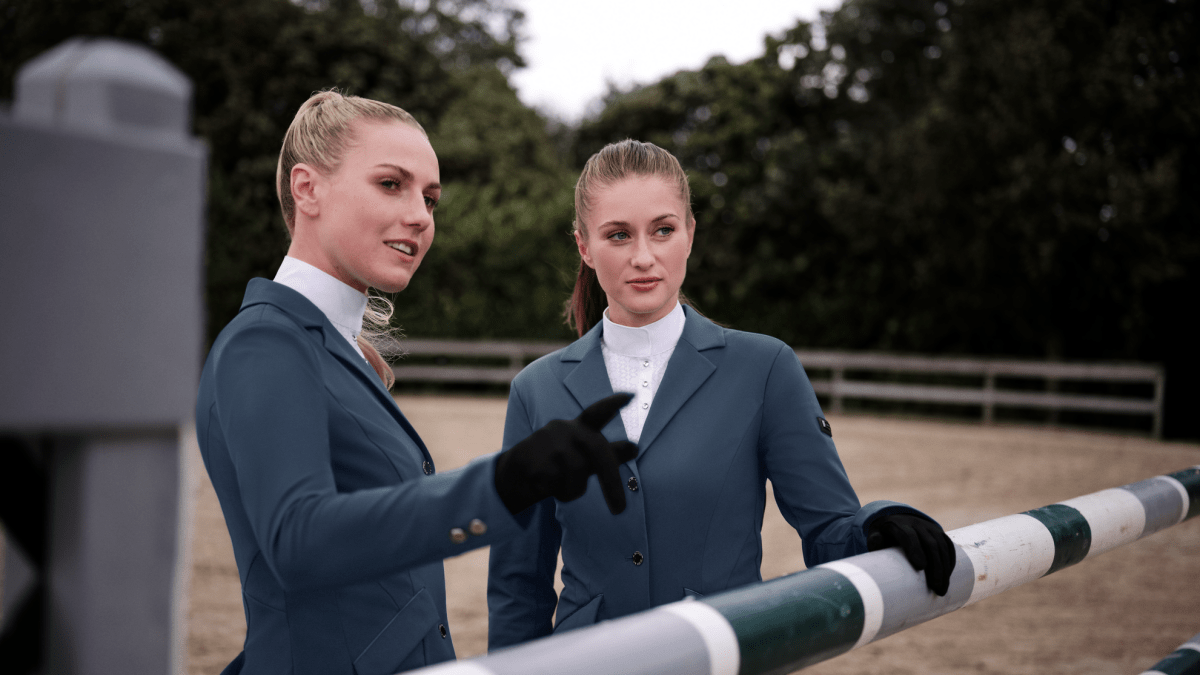
What to Wear Show Jumping
Proper attire is critical in the equestrian world. Failure to follow the rules can result in disciplinary warnings and even elimination. Ensure your first competition is a success with our guide to show jumping attire.
The USEF (United States Equestrian Federation) sets the rules for the English disciplines, including what qualifies as proper show jumping attire for competitors. Before your first competition, familiarize yourself with the USEF jumper attire rules to understand how to dress in the ring. Because the rulebook can be complicated and includes insider jargon, we’re here to break down the basics of what to wear.
Every horse show is different, but the prize list for your entry should outline the judge’s expectations for the level of dress required. For hunter/jumper show attire, jumpers have three primary categories that guide dress requirements: standard, proper and formal attire.
Standard
For most jumper riders at their first, unrated horse show, or schooling show, standard attire is likely all that will be required. This hunter/jumper outfit is the most relaxed category of dress. Riders do not have to wear a show coat or jacket but should wear basic English show clothes, including:
- Any color riding breeches (though it’s best to stick to classic color choices like tan).
- Shirt with sleeves and a collar, neatly tucked into breeches. A polo shirt is a good choice.
- Tall riding boots or half chaps that match your paddock boots.
Proper
The next step up from standard dress, proper attire is common throughout the regional levels of the sport. In addition to all the requirements of standard dress, riders in proper attire wear:
- A show coat of any color. Dark conservative colors are best, like navy blue or black.
- Riding breeches in a light color, usually white or tan. Dark colors, like black or dark gray, and pastel-colored breeches are not allowed.
- A show shirt, like the Ariat Sunstopper 3.0 Pro Show Shirt. Shirts should be white or a light color and worn tucked into breeches with collars zipped up or closed.
- Stock ties or neck chokers (white or very light in color), if not already built into your show shirt.
- Tall boots or half chaps that match your paddock boots.
Formal
This type of attire is reserved for the highest level of the sport. It follows the same basic guidelines as proper attire, but with additional restrictions. For first-time competitors at small, unrated or schooling shows, formal attire is not required, but it’s good practice to make note of how attire changes as you advance through the sport. Show coats for hunter/jumpers are required at this level, and they must be dark in color. Exceptions are made for riders wearing a designated coat for their national team or a scarlet jacket, sometimes called a “red coat.” These jackets are a high distinction that nods to the red jackets worn by masters of the hunt in foxhunting. Worn by a show jumper, they designate a rider who has competed for their nation at a Nation’s Cup or at the international level.
- Breeches, must be white or tan.
- Formal show shirts with a white collar and cuffs around the sleeves. They must be tucked in.
- Stock ties or neck chokers (white or very light in color), if they are not built into the show shirt.
- Tall boots. Half chaps are permitted if they match paddock boots.
- Military representatives or police can choose to compete in their dress uniform.

Show Jumper Attire Best Practices
A neat and tidy turnout for both horse and rider is non-negotiable. Paying attention to the details shows respect to the judges and the sport as a whole and will reflect well on you as a competitor. Be sure to:
Tie up loose strands of hair
- Youth riders can wear two braids, while adults either wear their hair in a low bun with a hairnet or tuck their hair into their helmet.
Clean and polish your boots
- Check that they fit well for a sharp, professional look. First-timer recommended read: How to Fit Tall Riding Boots
Wear a belt
- Although they are technically not required, you’d be hard-pressed to find a rider not wearing one. Select a black belt to stay on the conservative side, but fun colors and patterns are acceptable at the standard level.
Have gloves on hand
- Gloves are an easy way to sharpen your turnout in the ring, but only wear them if you’re used to riding in them.
Take pride in your presentation and appearance
- Your clothes should be clean and free of hair, mud and dirt. Worried you won’t be able to stay clean around horses all day? Bring a comfy pair of sweats and a jacket to throw on over your show gear when you’re not in the ring.
Check the weather
- Depending on conditions, judges may waive the show coat rule, meaning riders could opt not to wear their show coat and can compete in just a show shirt. In heavy rain, judges may also permit riders to wear raincoats in place of their show coat.
Know Before You Show
Your show jumping outfit should meet all requirements laid out in the rules. It’s your responsibility as a rider to understand and follow the rules of the sport. Consult with your trainer or the show steward if you’re unsure of any element of your show jumping clothes or to see if your gear is in compliance with the rulebook. Be sure to do this before you enter the show ring, even if you’re just heading in to walk your course. It’s much better to check in with a steward in advance than face elimination for something you can easily control.
Now that you know the attire to wear for show jumping, pick out your favorites online. Shop our English Show collection to find the best in comfort, style and performance.






